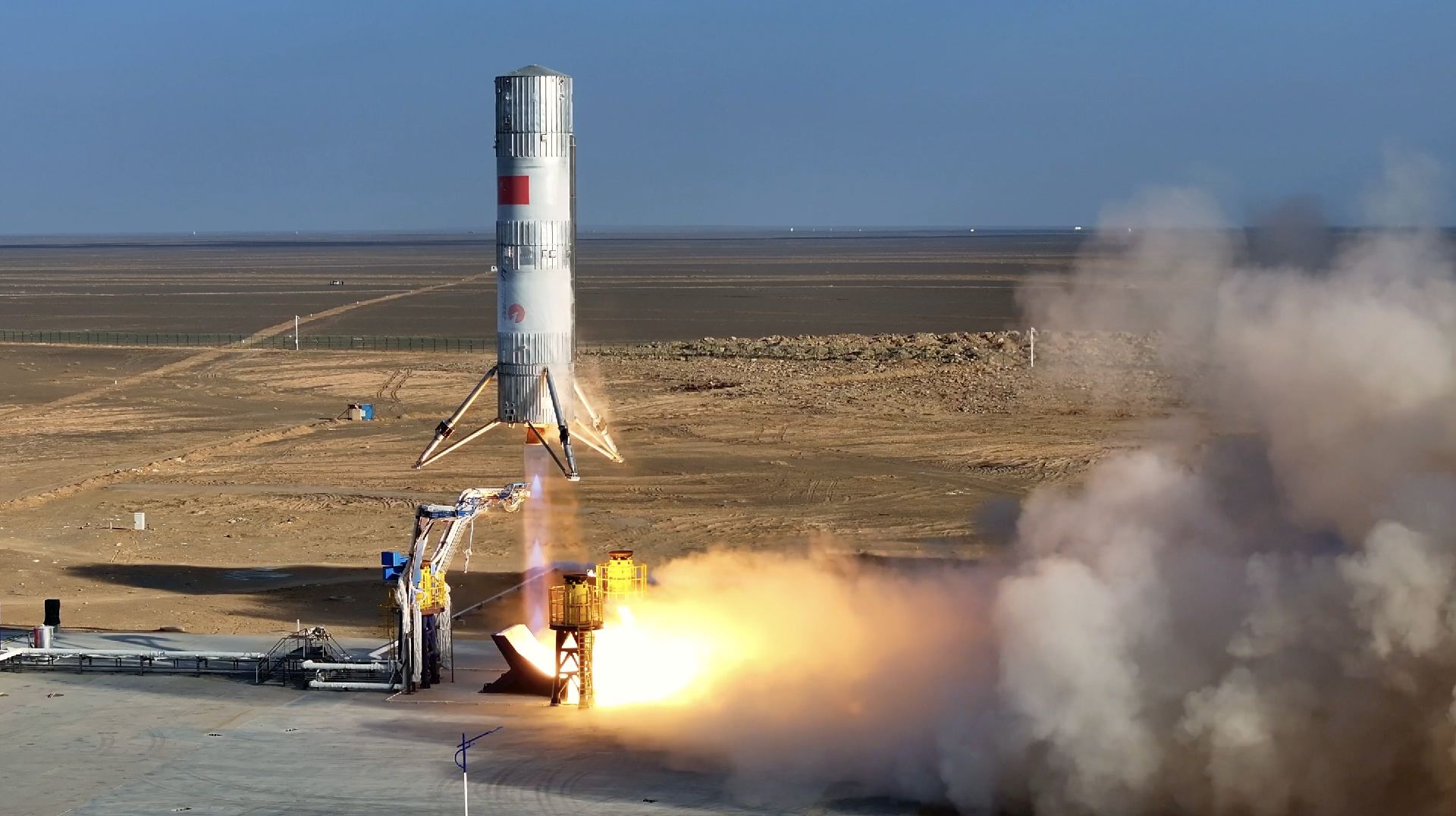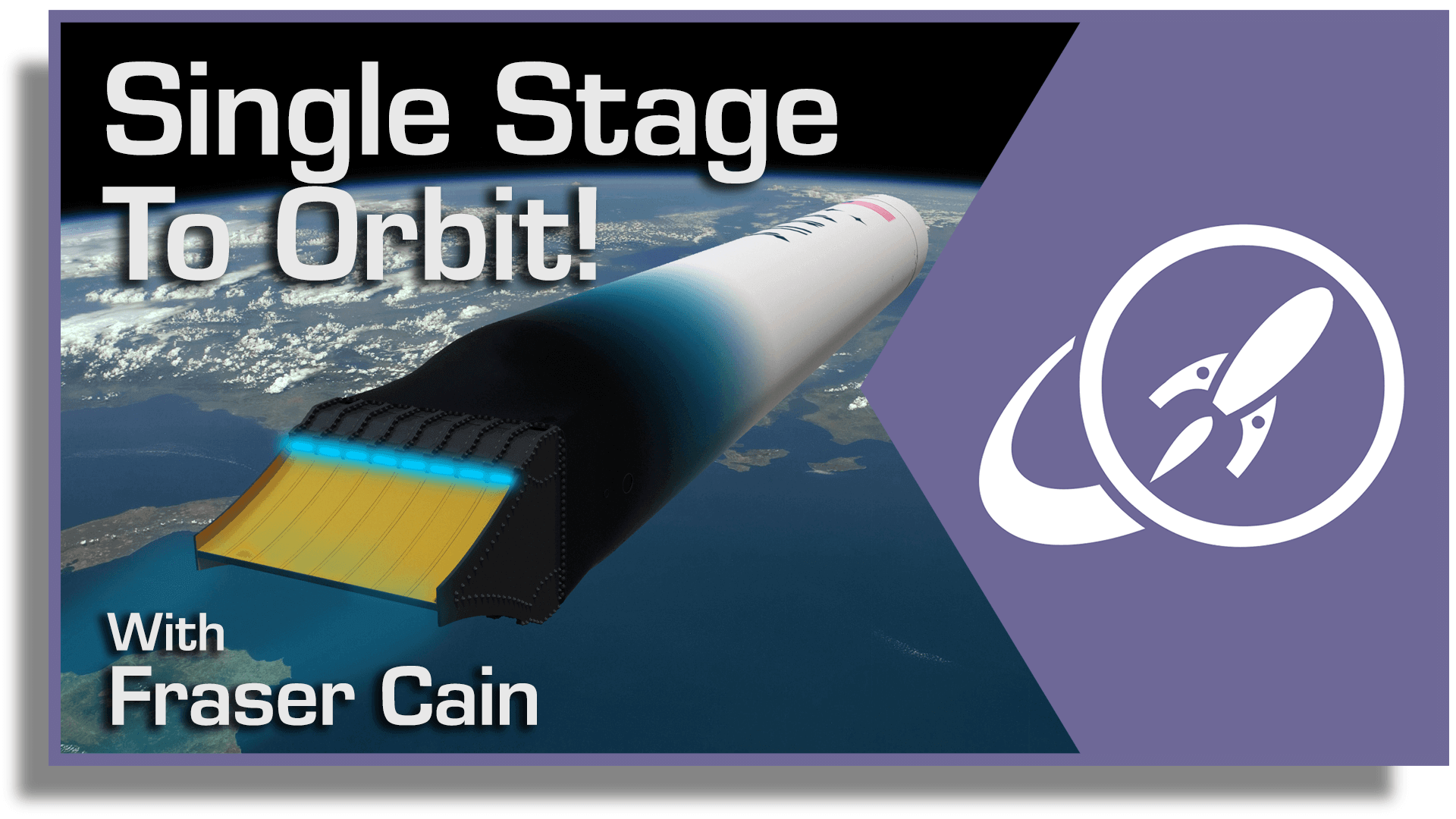The sight of a Falcon-9 rocket landing in an upright orientation is not an unusual sight. It seems that the Chinese aerospace firm LandSpace is getting in on the act with their new Zhuque-3 (I don’t even know how to pronounce that) reusable methane rocket. The prototype booster took off, reached a height of 350 metres and landed 60 seconds later about 100 metres away on a landing pad. LandSpace have revealed this test showcases key technologies that will be used for their upcoming reusable rocket.
Continue reading “Chinese Firm Successfully Tests a New Reusable Booster”Why Do Rockets Need Stages? The Quest to Build a Single Stage to Orbit (SSTO)
Now, don’t get me wrong, Science Fiction is awesome. Like almost everyone working in the field of space and astronomy, I was deeply influenced by science fiction. For me, it was Star Trek and Star Wars. I had a toy phaser that made this awesome really loud phaser sound, and I played with it non-stop until it disappeared one day. And I was sure I’d left it in the middle of my floor, like I did with all my toys, but I found it a few years later, hidden up in a closet that I couldn’t reach. And I always wondered how it got there.
Anyway, back to science fiction. For all of its inspiration, science fiction has put a few ideas into our brains which aren’t entirely helpful. You know, warp drives, artificial gravity, teleportation, and rockets that take off, fly to space, visit other planets orbiting stars, land again.
The Millennium Falcon, Firefly, and Enterprise Shuttles are all examples of single stage to orbit to orbit spacecraft, or SSTOs.
Consider the rockets that exist in reality, you know, the Atlases, Falcons and Deltas. They take off from a launch pad, fly for a bit until the fuel is used up in a stage of the rocket, then they jettison that stage and thrust with the next stage. The mighty Saturn V was so powerful that it had three stages, as it made it’s way to orbit.

As we discussed in a previous article, SpaceX is working to make the first stage, and maybe even the second stage reusable, which is a vast improvement over just letting everything burn up, but there are no rockets that actually fly to orbit and back in a single stage. In fact, using the technology we have today, it’s probably not a good idea.
Has anyone ever worked on a single stage to orbit? What technological advances will need to happen to make this work?
As I said earlier, a single stage to orbit rocket would be something like the Millennium Falcon. It carries fuel, and then uses that fuel to fly into orbit, and from world to world. Once it runs out of fuel, it gets filled up again, and then it’s off again, making the Kessel Run and avoiding Imperial Blockades.
This concept of a rocket matches our personal experience with every other vehicle we’ve ever been in. You drive your car around and refuel it, same with boats, airplanes and every other form of Earth-based transportation.
But flying into space requires the expenditure of energy that defies comprehension. Let me give you an example. A Falcon 9 rocket can lift about 22,800 kilograms into low-Earth orbit. That’s about the same as a fully loaded cement truck – which is a lot.
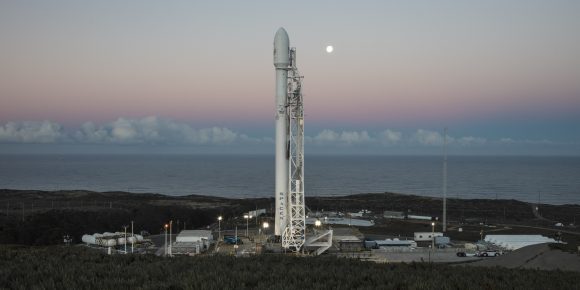
The entire fueled Falcon 9 weighs just over 540,000 kg, of which more than 510,000 kgs of it are fuel, with a little extra mass for the engines, fuel tanks, etc. Imagine if you drove a car that was essentially 95% fuel.
The problem is specific impulse; the maximum amount of thrust that a specific kind of engine and fuel type can achieve. I’m not going to go into all the details, but the most efficient chemical rockets we have, fueled by liquid hydrogen and oxygen, can just barely deliver enough thrust to get you to orbit. They have a maximum specific impulse of about 450 seconds.
Because the amount of fuel it takes to launch a rocket is so high, modern rockets use a staging system. Once a stage has emptied out all its fuel, it detaches and returns to Earth so that the second stage can keep going without having to drag along the extra weight of the empty fuel tanks.
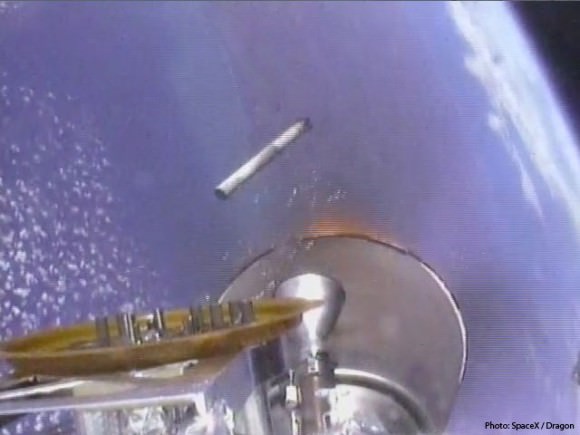
You might be surprised to know that many modern rockets are actually capable of reaching orbit with a single stage. The problem is that they wouldn’t be able to carry any significant payload.
At the end of the day, considering the chemical rockets we have today, the multi-staged profile is the most efficient and cost-effective strategy for carrying the most payload to space for the lowest cost possible.
Has anyone tried developing SSTOs in the past? Definitely. Probably the most widely publicized was NASA’s X-33/VentureStar program, developed by Lockheed Martin in the 1990s.
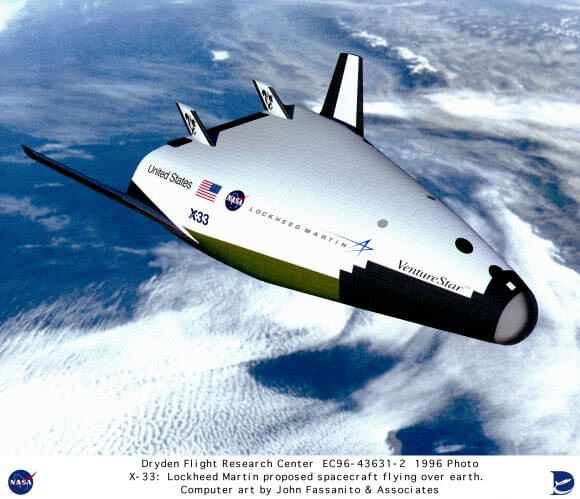
The purpose of the X-33 was to test out a range of new technologies for NASA, including composite fuel tanks, autonomous flight, and a new lifting body design.
In order to make this work, they developed a new kind of rocket engine called the “aerospike”. Unlike a regular rocket engine which provide a fixed amount of thrust, an aerospike could be throttled back like a jet engine, using less fuel at lower altitudes, where the atmosphere is thickest.
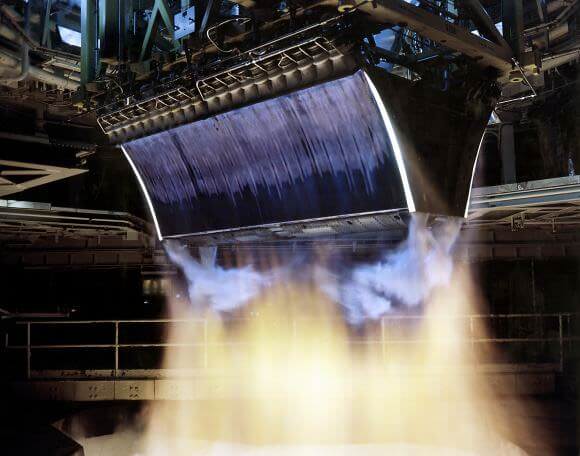
Lockheed Martin was working on a 1/3rd scale prototype, but they struggled with many of the new technologies. In the end, their failure to be able to build a composite fuel tank that could contain the liquid oxygen and hydrogen forced them to abandon the project.
Even if they could get the technology working, so the X-33 was fully reusable, its ability to carry a payload would have been dramatically lower than a traditional multi-staged rocket.
In order to really achieve the dream of single stage to orbit, we need to step away from chemical rockets and move to a type of engine that can deliver thrust more efficiently.
We know that jets work more efficiently than rockets, because they only need to carry fuel. They pull oxygen in from the atmosphere, to burn the fuel. So one intriguing idea is to make a rocket that acts like a jet engine while in the atmosphere, and then acts like a rocket once it’s out in space.
And that’s the plan with the British Skylon rocket. It would take off from a regular runway, accelerate to about 6,600 km/h reaching an altitude of 26 kilometers. All this time, its SABRE engine would be pulling in oxygen from the atmosphere, combining it with hydrogen fuel.

From this point, it would switch over to an internal liquid oxygen tank to provide oxidizer, and complete the flight to orbit. All the while using the same flexible SABRE engine. Once in orbit, it would release its 15-tonne payload and then return to Earth, landing on a runway like the space shuttle orbiter did. It’s a really creative idea.
Unfortunately, the development of the Skylon has taken a long time, with shrinking budgets limiting the amount of tests they’ve been able to do. If everything goes well, the first prototype might fly within a few years, so stay tuned to this story.
Another idea which has had some testing is the idea of a nuclear rocket. Unlike a chemical rocket, which burns fuel, and blasts it out the back for thrust, a nuclear rocket would carry a reactor on board. It would heat up some kind of working fuel, like liquid hydrogen, and then blast it out the back for propulsion.
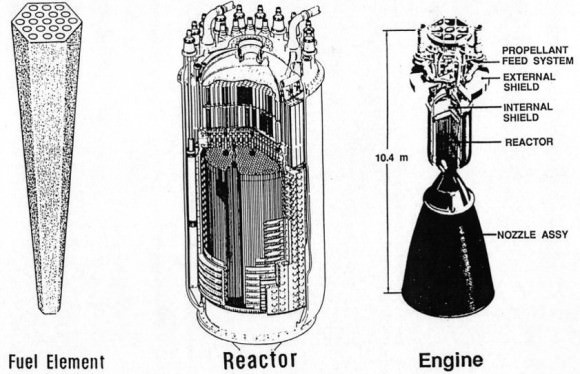
NASA did some tests a few decades ago with a nuclear thermal rocket called NERVA, and found that they could sustain high levels of thrust for very long periods of time. Their final prototype, provided continuous thrust for over 2 hours, including 28 minutes at full power.
NASA calculated that a nuclear-powered rocket would be roughly twice as efficient as a traditional chemical rocket. It would have a specific impulse of more than 950 seconds. But flying a nuclear rocket into space comes with a significant downside. Rockets explode. It’s bad when a chemical rocket explodes, but if a nuclear reactor detonated while making its way up through the atmosphere, it would rain down radioactive debris. For now, that’s considered too much of a risk; however, future interplanetary missions may very well use nuclear rockets.
There’s one more exotic fuel system that’s really exciting – metallic hydrogen. This solid form appears naturally at the heart of Jupiter, under the incredible pressure of the planet’s gravity. But earlier this year, researchers at Harvard finally created some in the lab. They used a tiny vice to squeeze hydrogen atoms with more force than the pressures at the center of the Earth.

It took an enormous amount of energy to squeeze hydrogen together that tightly, but in theory, once crafted, it should be relatively stable. And here’s the best part. When you ignite it, you get that energy back.
If used as a rocket fuel, it would provide a specific impulse of 1700 seconds. Compare that to the mere 450 from chemical rockets. A rocket powered by metallic hydrogen would easily get to orbit with a single stage, and travel efficiently to other planets.
Single Stage to Orbit rockets would be awesome. Science fiction has foretold it. That said, at the end of the day, whatever gets the most amount of payload into orbit for the lowest price is the most interesting rocket system. And right now, that’s staged rockets.
However, a bigger issue might be reliability and reusability. If you can get a single vehicle that takes off, travels to orbit and then returns to its launch pad, you can’t get anything simpler than that. No rockets to restack, no barges to navigate. You just use and reuse the same system again and again, and that’s a really exciting idea.
Right this moment, reusable staged rockets like SpaceX has the edge, but if and when the Skylon gets flying, I think we’ll have some serious competition.
Once we master metallic hydrogen, spaceflight will look very very different. Science reality will nearly match science fiction, and I’ll finally be able to fly my own personal Millennium Falcon.
SpaceX Just Re-Used a Rocket. Why This Changes Everything
On March 30, 2017, SpaceX performed a pretty routine rocket launch. The payload was a communications satellite called SES-10, owned by a company in Luxembourg. And if all goes well, the satellite will eventually make its way to a high orbit of 35,000 km (22,000 miles) and deliver broadcasting and television services to Latin America.
For all intents and purposes, this is an absolutely normal, routine, and maybe even boring event in the space industry. Another chemical rocket blasted off another communications satellite to join the thousands of satellites that have come before.
Of course, as you probably know, this wasn’t a routine launch. It was the first step in one of the most important achievements in space flight – launch reusability. This was the second time the 14-story Falcon 9 rocket had lifted off and pushed a payload into orbit. Not Falcon 9s in general, but this specific rocket was reused.
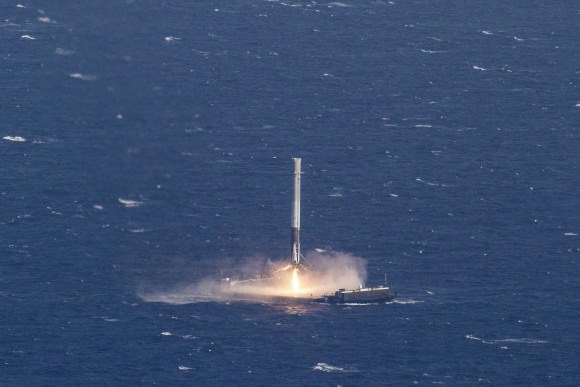
In a previous life, this booster blasted off on April 8, 2016 carrying CRS-8, SpaceX’s 8th resupply mission to the International Space Station. The rocket launched from Florida’s Cape Canaveral, released its payload, re-entered the atmosphere and returned to a floating robotic barge in the Atlantic Ocean called Of Course I Still Love You. That’s a reference to an amazing series of books by Iain M. Banks.
Why is this such an amazing accomplishment? What does the future hold for reusability? And who else is working on this?
Developing a rocket that could be reused has been one of the holy grails of the space industry, and yet, many considered it an engineering accomplishment that could never be achieved. Trust me, people have tried in the past.
Portions of the space shuttle were reused – the orbiter and the solid rocket boosters. And a few decades ago, NASA tried to develop the X-33 as a single stage reusable rocket, but ultimately canceled the program.

To reuse a rocket makes total sense. It’s not like you throw out your car when you return from a road trip. You don’t destroy your transatlantic airliner when you arrive in Europe. You check it out, do a little maintenance, refuel it, fill it with passengers and then fly it again.
According to SpaceX founder Elon Musk, a brand new Falcon 9 first stage costs about $30 million. If you could perform maintenance, and then refill it with fuel, you’d bring down subsequent launches to a few hundred thousand dollars.
SpaceX is still working out what a “flight-tested” launch will cost on a reused Falcon 9 will cost, but it should turn into a significant discount on SpaceX’s already aggressive prices. If other launch providers think they’re getting undercut today, just wait until SpaceX really gets cranking with these reused rockets.
For most kinds of equipment, you want them to have been re-used many times. Cars need to be taken to the test track, airplanes are flown on many flights before passengers ever climb inside. SpaceX will have an opportunity to test out each rocket many times, figuring out where they fail, and then re-engineering those components. This makes for more durable and safer launch hardware, which I suspect is the actual goal here – safety, not cost.
In addition to the first stage, SpaceX also re-used the satellite fairing. This is the covering that makes the payload more aerodynamic while the rocket moves through the lower atmosphere. The fairing is usually ejected and burns up on re-entry, but SpaceX has figured out how to recover that too, saving a few more million.
SpaceX’s goals are even more ambitious. In addition to the first stage booster and launch fairing, SpaceX is looking to reuse the second stage booster. This is a much more complicated challenge, because the second stage is going much faster and needs to lose a lot more velocity. In late 2014, they put their plans on hold for a second stage reuse.
SpaceX’s next big milestone will be to decrease the reuse time. From almost a year to under 24 hours.
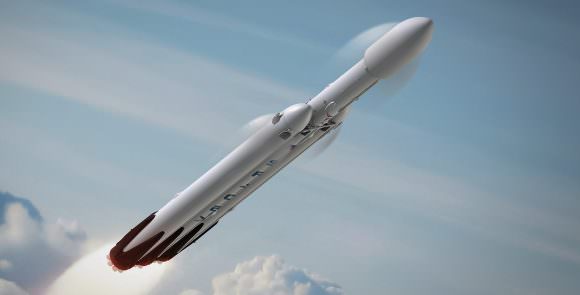
Sometime this year, SpaceX is expected to do the first launch of the Falcon Heavy. A launch system that looks like it’s made up of 3 Falcon-9 rockets bolted together. Since that’s basically what it is.
The center booster is a reinforced Falcon-9, with two additional Falcon-9s as strap-on boosters. Once the Falcon Heavy lifts off, the three boosters will detach and will individually land back on Earth, ready for reassembly and reuse. This system will be capable of carrying 54,000 kilograms into low Earth orbit. In addition, SpaceX is hoping to take the technology one more step and have the upper stage return to Earth.
Imagine it. Three boosters and upper stage and payload fairing all returning to Earth and getting reused.
And waiting in the wings, of course, is SpaceX’s huge Interplanetary Transport System, announced by Elon Musk in September of 2016. The super-heavy lift vehicle will be capable of carrying 300,000 kilograms into low Earth orbit.

For comparison, the Apollo era Saturn V could carry 140,000 kg into low Earth orbit, so this thing will be much much bigger. But unlike the Saturn V, it’ll be capable of returning to Earth, and landing on its launch pad, ready for reuse.
SpaceX just crossed a milestone, but they’re not the only player in this field.
Perhaps the biggest competitor to SpaceX comes from another internet entrepreneur: Amazon’s Jeff Bezos, the 2nd richest man in the world after Bill Gates. Bezos founded his own rocket company, Blue Origin in Seattle, which had been working in relative obscurity for the last decade. But in the last few years, they demonstrated their technology for reusable rocket flight, and laid out their plans for competing with SpaceX.
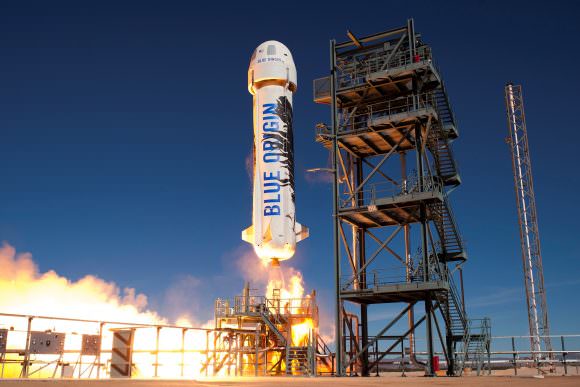
In April 2015, Blue Origin launched their New Shepard rocket on a suborbital trajectory. It went up to an altitude of about 100 km, and then came back down and landed on its launch pad again. It made a second flight in November 2015, a third flight in April 2016, and a fourth flight in June 2016.
That does sound exciting, but keep in mind that reaching 100 km in altitude requires vastly less energy than what the Spacex Falcon 9 requires. Suborbital and orbital are two totally milestones. The New Shepard will be used to carry paying tourists to the edge of space, where they can float around weightlessly in the vomit of the other passengers.
But Blue Origin isn’t done. In September 2016, they announced their plans for the follow-on New Glenn rocket. And this will compete head to head with SpaceX. Scheduled to launch by 2020, like, within 3 years or so, the New Glenn will be an absolute monster, capable of carrying 45,000 kilograms of cargo into low Earth orbit. This will be comparable to SpaceX’s Falcon Heavy or NASA’s Space Launch System.
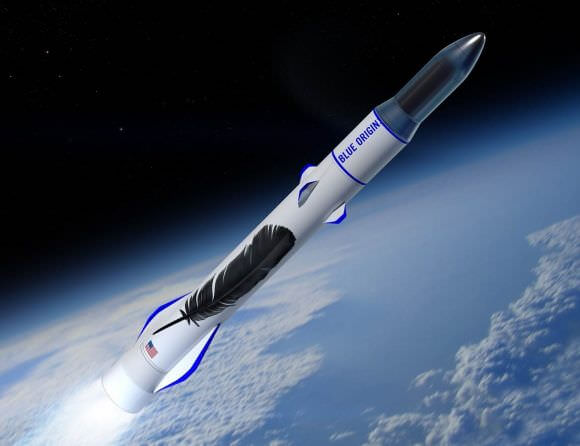
Like the Falcon 9, the New Glenn will return to its launch pad, ready for a planned reuse of 100 flights.
A decade ago, the established United Launch Alliance – a consortium of Boeing and Lockheed-Martin – was firmly in the camp of disposable launch systems, but even they’re coming around to the competition from SpaceX. In 2014, they began an alliance with Blue Origin to develop the Vulcan rocket.
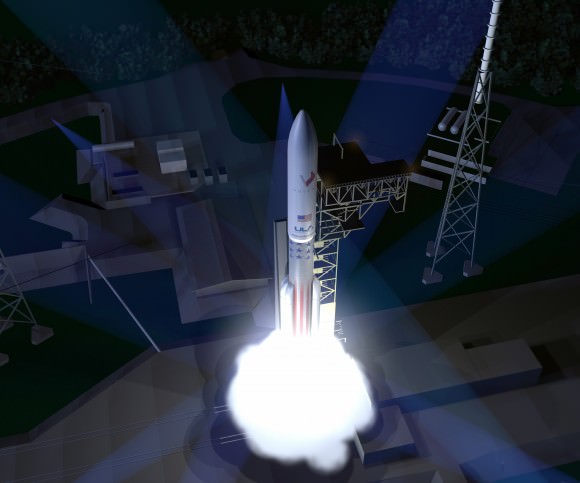
The Vulcan will be more of a traditional rocket, but some of its engines will detach in mid-flight, re-enter the Earth’s atmosphere, deploy parachutes and be recaptured by helicopters as they’re returning to the Earth. Since the engines are the most expensive part of the rocket, this will provide some cost savings.
There’s another level of reusability that’s still in the realm of science fiction: single stage to orbit. That’s where a rocket blasts off, flies to space, returns to Earth, refuels and does it all over again. There are some companies working on this, but it’ll be the topic for another episode.
Now that SpaceX has successfully launched a first stage booster for the second time, this is going to become the new normal. The rocket companies are going to be fine tuning their designs, focusing on efficiency, reliability, and turnaround time.
These changes will bring down the costs of launching payloads to orbit. That’ll mean it’s possible to launch satellites that were too expensive in the past. New scientific platforms, communications systems, and even human flights become more reasonable and commonplace.
Of course, we still need to take everything with a grain of salt. Most of what I talked about is still under development. That said, SpaceX just reused a rocket. They took a rocket that already launched a satellite, and used it to launch another satellite.
It’s a pretty exciting time, and I can’t wait to see what happens next.
Now you know how I feel about this accomplishment, I’d like to hear your thoughts. Do you think we’re at the edge of a whole new era in space exploration, or is this more of the same? Let me know your thoughts in the comments.

